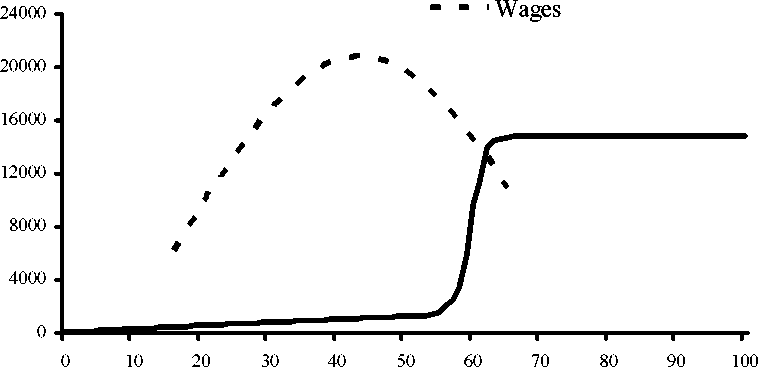some countries could follow policies that maintain or even reduce explicit deficits and
debt levels while simultaneously increasing prospective deficits (the so-called “one-off”
measures). Such policies would alter the timing of deficit accruals but are unlikely to be
associated with any measurable regularity in real fiscal impulses.
The reason for drawing such a conclusion is that a particular time series of government
net cash flows may be associated with myriad ways of arranging the sizes and timing of
different taxes and expenditures - each of which may generate different expectations
among the public about whether they are temporary or permanent, and each of which
could be associated with different distributions of fiscal burdens among private agents
situated differently in their life-cycle stages. Hence, a particular time series of deficits and
debt may be associated with wildly different real underlying fiscal policies - that is, a
given time series may be associated with different real flows and distributions of
consumption, saving, investment, and output, and different levels of real interest rates,
inflation, and exchange rates. These differences in real economic outcomes would emerge
primarily because each distinct policy would exert differential effects on different
subgroups of individuals—distinguished, especially, with regard to their life-cycle stage.24
To provide a simple example, consider a strictly pay-as-you-go expansion of a public
pension program. Retiree benefits are increased immediately and permanently by €X each
year and those increases are financed by additional receipts of €X each year sourced from
workers’ payrolls. Figure 3.2 shows stylized profiles of public pension benefits and wage
earnings by age. Those profiles show that the policy of pay-as-you-go pension increases
would benefit older generations and the payroll tax increases would impose additional
financial burdens on younger workers. By construction, however, there would be no
change in the time series of the projected difference between total annual receipts and
outlays as a result of this policy change.
Figure 3.2 Social Security Benefit and Wage Profiles by Age
Euros/
Year
------Social Security Benefits

Age
For a related discussion see Gokhale (2004).
67
More intriguing information
1. Private tutoring at transition points in the English education system: its nature, extent and purpose2. Ronald Patterson, Violinist; Brooks Smith, Pianist
3. THE WAEA -- WHICH NICHE IN THE PROFESSION?
4. Reputations, Market Structure, and the Choice of Quality Assurance Systems in the Food Industry
5. Developmental Robots - A New Paradigm
6. Methods for the thematic synthesis of qualitative research in systematic reviews
7. The name is absent
8. The name is absent
9. The name is absent
10. Foreword: Special Issue on Invasive Species